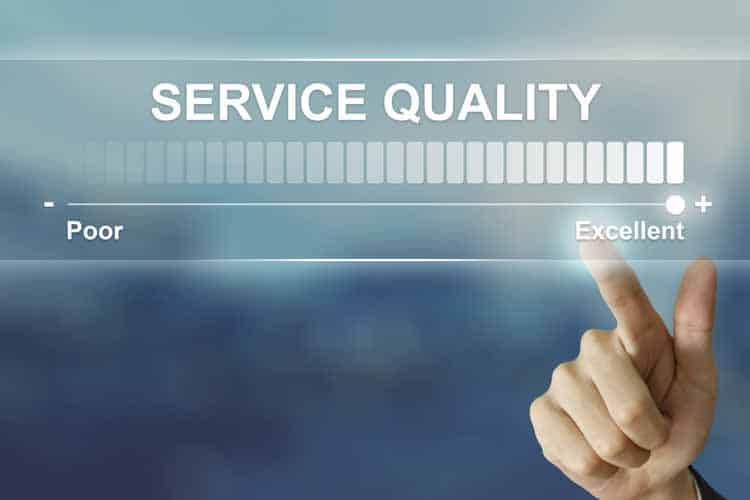-
5 Dangerous Mistakes In Supply Chain Management And How To Avoid Them
For many companies, supply chain management involves a lot of missed opportunities. Instead of having a supply chain that adds value they have one that’s full of errors which cost the company time and money.
Even if your company’s supply chain isn’t in shambles, you might still be missing opportunities to optimize your supply chain. The more you can correct and avoid mistakes in supply chain management, the more your company will benefit.
Developing an efficient supply chain management strategy will help cut costs and increase profit margins. In addition,improving the supply chain and related business processes helps your company plan for the future, adapt to changes, and improve customer service. Here are five dangerous mistakes that can show up in your supply chain, along with tips for how to avoid or correct them.

1. Neglecting Data And KPIs
Collecting reliable, relevant data and using it effectively is a key part of any business. Ignoring data related to supply chain management is one of the easiest, and most costly, mistakes you can make. Without reliable data, you’ll have a harder time avoiding some of the other mistakes on this list as well. Part of collecting this data is making sure the key performance indicators (KPIs) that you measure are S.M.A.R.T:
- Specific
- Measurable
- Achievable
- Relevant
- Timely
Some of the most important KPIs to measure in the supply chain include cost per order processed, cost per order handled, fill rates and fulfillment times, cost per unit delivered, and average order value. Make sure you’re not wasting time measuring KPIs you don’t need. Figure out what data and metrics are most important to your company’s supply chain and focus on those.

2. Not Planning For The Future
Another easy mistake to make, which can cost your company dearly, is neglecting to plan for the future. If your supply chain strategy isn’t ready to adapt to unexpected changes and grow with your company’s needs then it’s not very useful to you.
You’ll want to have a plan in place to deal with disruptions to the supply chain. That way if something happens in your supply chain, you’ll be able to deal with it quickly and minimize or avoid having the problem affect your customers.
It’s also important to align the design of your supply chain with your business’s future goals. If you only look at your company’s current needs when crafting your supply chain management strategy you might have difficulty adjusting it in the future. Make sure you keep your long term growth plan in mind so your supply chain will be ready when your company grows or adds new products.

3. Lack of Optimized Business Processes
Not optimizing business processes related to supply chain management is another common mistake. Usually, problems like this develop gradually as the company grows and/or shifts focus. As that happens, supply chain practices that used to work pretty well can become less and less efficient.
One of the first steps to optimizing supply chain management is to get all your teams working together. Operating in silos is much less efficient than operating as a network. Make sure everyone involved in managing the supply chain can easily collaborate and is clear on their common goals.
Part of optimizing your business processes involves increasing supply chain transparency. End-to-end supply chain visibility makes it easier to collect accurate data, maximizes efficiency, and is a key part of risk management efforts. It’ll also help with improving security controls.

4. Letting The Process Get Messy
Another mistake that tends to creep up gradually is that companies let their supply chains get too “messy.” Maybe you’re working with too many partners. Or perhaps you’ve made your supply chain so lean it falls apart when there’s a problem. Whatever it is that’s making your process “messy” it’s time to get things sorted out and find a balance that’s right for your company.
If your supply chain includes large numbers of contractors, suppliers, shipping companies, and so on it just makes the process more complex and risky. Take a close look at your partners and weed-out any that you don’t need or who are hurting your bottom line. Finding the right balance between too many and not enough can be tricky, but it’s worth it.
Trying to make your supply chain too lean or too agile can also cause problems. For most companies, a hybrid approach is best. Finding a middle-ground between the two approaches lets you keep your supply chain cost-conscious and efficient while also being agile enough to adapt to changing supply and demand.

5. Poor Customer Service
If you’re not creating effective relationships on both ends of your supply chain, then the whole process isn’t benefiting your company as much as it could. Both vendors and customers are key to your company’s success. The better your relationships with them, the better your supply chain management will be.
Price is important when choosing a supplier. But when you’re shopping around for the best price, you should also keep in mind what kind of company you’ll be working with. Someone who’s willing to work as a partner with your company is much more beneficial in the long-run than saving a few dollars. You might even find some who will work with your accounts payable department to offer discounts for early payment or bulk orders.
Understanding your customers’ needs is another key aspect of effective supply chain management. You can start by asking for an evaluation of supply performance on customer service surveys. Once you start taking with your customers, there’s a good chance you’ll find that a one-size-fits-all approach isn’t all that efficient. You might find that some customers need more support while others are being over-serviced. Again, finding the right balance is key to improving supply chain management.

Automation Can Help
As you’re working to correct and avoid mistakes in supply chain management, business process automation (BPA) can help. Automating procurement, accounts payable, and document management helps streamline the different departments involved in supply chain management. It also makes it easier to collect and track useful data, access information needed to plan for the future, and optimize the entire process. Features like a vendor portal in the AP automation software can even help improve customer service.
Automated Software-as-a-Service (SaaS) systems like we offer at NextProcess are highly configurable. You’ll be able to customize and adapt them to fit your new supply chain management strategy perfectly. If you’re ready to see how BPA can benefit your company, just get in touch with us. We’ll set up a free demo so you can see first hand how our software can help you achieve your supply management goals.